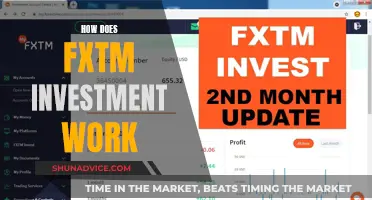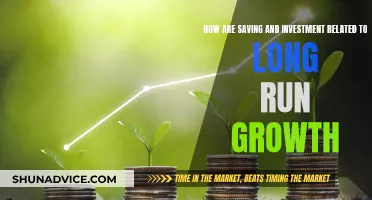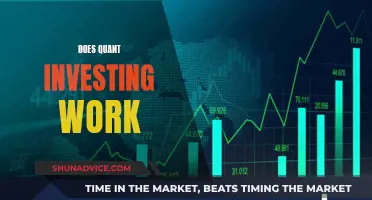
There are many options for investing your money, and the best choice depends on your goals and risk tolerance. Here are some of the best investments you can make right now:
- High-yield savings accounts: These accounts offer a higher rate of return than traditional bank savings accounts and provide easy access to your money.
- Certificates of deposit (CDs): CDs are a low-risk investment that offers a fixed interest rate for a defined period. They are ideal if you know you will need the money at a specific time in the future.
- Bonds: Bonds offer a relatively safe and stable form of fixed income. Lower-risk government bonds are backed by the full faith and credit of the government and are virtually risk-free, while higher-risk corporate bonds offer potentially higher yields.
- Mutual funds: Mutual funds pool money from multiple investors to purchase stocks, bonds, or other assets. They are a cost-effective way to diversify your investments and reduce risk.
- Index funds: Similar to mutual funds, index funds aim to provide investment returns that match the performance of a specific market index, such as the S&P 500. They tend to be more cost-effective and less volatile than actively managed funds.
- Exchange-traded funds (ETFs): ETFs are like mutual funds but are traded on stock exchanges, offering greater flexibility and lower fees.
- Dividend stocks: Dividend stocks provide regular cash payouts and are often associated with stable, profitable companies. They can be a good choice for investors seeking a combination of growth and fixed income.
- Growth stocks: These are stocks of companies that are expected to have high growth rates and investment returns. They can be risky but offer the potential for significant gains.
- Real estate: Investing in real estate can provide high returns but requires a large amount of capital and hands-on management. An alternative is to invest through real estate crowdfunding platforms or REITs.
- Robo-advisor portfolios: Robo-advisors use automated algorithms to build and manage a diversified investment portfolio based on your goals and risk tolerance. They are a low-cost option for investors who don't want to actively manage their investments.

High-yield savings accounts
- Interest rate: Look for an account with a competitive rate. The higher the rate, the faster your savings will grow.
- Initial deposit: Some banks require a minimum deposit to open a high-yield savings account, ranging from $5 to $100 or more.
- Minimum balance: Read the fine print to learn the minimum balance required to avoid service fees and earn the maximum APY.
- Fees: Many high-yield savings accounts have no fees, but some do. Common fees include monthly maintenance fees, ATM fees, and fees for excessive withdrawals.
- Compounding interest: Find out how often interest is compounded (daily, monthly, or annually) as this will impact how quickly your savings grow.
- Online vs. traditional bank: Online banks often offer higher interest rates and lower fees than traditional banks, but may have fewer products and limited customer support. Traditional banks offer more convenience and easier access to your funds.
- UFB Direct High Yield Savings: UFB Direct is an online division of Axos Bank, offering an excellent APY of 5.25%. There are no monthly fees or minimum balance requirements, and all balance tiers earn the top rate. You also get a complimentary ATM card that can be used at 91,000 ATMs nationwide.
- Laurel Road High Yield Savings: Laurel Road is an online digital banking platform owned by KeyBank, offering a competitive APY of 5.15% with no monthly fees or balance requirements. You can link your savings account to your Laurel Road checking account for overdraft protection.
- Varo Savings Account: Varo offers an APY of 3.00%, but you can earn 5.00% on balances up to $5,000 if you meet certain requirements, such as having a Varo Bank Account and receiving direct deposits of at least $1,000 per month. Varo also offers multiple automated savings tools to help you save effortlessly.
- LendingClub Bank High-Yield Savings: LendingClub offers a strong APY of 5.00% with no monthly fees and a low minimum deposit of $100. You can access your money at over 37,000 ATMs nationwide for free. LendingClub has excellent customer reviews on Trustpilot, with an average rating of 4.7 stars.
- Bask Bank Interest Savings Account: Bask Bank is an online-only financial institution offering an APY of 5.10% with no monthly fees, minimum deposit, or balance requirements. However, they do not offer a debit or ATM card, so you must rely on electronic transfers to access your money.
- TAB Bank High Yield Savings: TAB Bank offers an impressive APY of 5.27% with no monthly maintenance fees and no minimum deposit required to open an account. However, there are other fees to watch out for, such as outgoing wire transfers, stop payments, and overdrafts.
College: A Risky Bet?
You may want to see also

Certificates of deposit (CDs)
When you open a CD, you'll need to consider the interest rate, term, principal, and financial institution. The interest rate on a CD is usually fixed, but there are also variable-rate CDs that could earn a higher return if rates rise. The term is the length of time that you agree to leave your funds deposited, typically ranging from 3 months to 10 years. The principal is the amount that you agree to deposit when you open the CD, and the financial institution will set factors such as early withdrawal penalties.
CDs are a good option if you have cash that you won't need for a few years and want to earn a higher interest rate than you would with a savings or money market account. They are also a good choice if you want a conservative investment or prefer to avoid the risk and volatility of the stock and bond markets. However, one downside of CDs is that your money is locked in, and you will be charged a penalty for early withdrawal. Additionally, the fixed rate could cost you if interest rates rise during the term, and inflation can eat away at the value of your money.
When shopping for a CD, it's important to compare different offers by looking at the term, interest rate, and early withdrawal penalty. You can find CDs at banks, credit unions, and brokerages, and the top-paying CDs typically pay much more than the national average rate. It's also important to note that CDs offered by banks are insured up to $250,000 by the Federal Deposit Insurance Corporation (FDIC), while those offered by credit unions are insured by the National Credit Union Administration (NCUA).
Smartly Choosing Your Investment Portfolio
You may want to see also

Bonds
Interest Rates and Bond Prices
Bond values move inversely to interest rate changes. When interest rates rise, bond values decline, and vice versa. With interest rates projected to keep rising, it is important to keep bond maturities short-term (one to three years) or intermediate-term (two to ten years). Shorter-term bond investments are less exposed to rising rates.
"Duration"
"Duration" describes the vulnerability of a bond or ETF to interest rate changes. It measures how much a fund's value will change with a 1% change in interest rates. For example, a three-year bond ETF duration means that when interest rates increase by 1%, the fund price typically falls by 3%, and vice versa.
Best Bond ETFs
- Pimco Active Bond Exchange-Traded Fund (BOND)
- Vanguard Intermediate-Term Treasury Index Fund ETF (VGIT)
- Pimco Enhanced Short Maturity Active ESG ETF (EMNT)
- ProShares Investment Grade-Interest Rate Hedged ETF (IGHG)
- IShares National Muni Bond ETF (MUB)
- IShares 0-5 Year TIPS Bond ETF (STIP)
- Vanguard Total International Bond ETF (BNDX)
- SPDR Portfolio Corporate Bond ETF (SPBO)
- SPDR Portfolio High Yield Bond ETF (SPHY)
- SPDR Portfolio Long Term Corporate Bond ETF (SPLB)
Bond Mutual Funds and ETFs
Bond mutual funds and ETFs can help investors diversify their bond exposure and target specific goals such as income, yield, or total return.
Individual Bonds
If you have the time, skill, and capital to build and manage your own portfolio, buying individual bonds may be appealing. This approach allows you to choose specific bonds and hold them until they mature. However, you face the risks of the issuer defaulting or calling the bonds prior to maturity.
Final Thoughts
Interest rate hikes by the Federal Reserve have pushed bond yields to levels not seen in over a decade. With the Fed possibly ending rate increases, investors may want to increase their bond exposure. The rise in interest rates has made bonds more attractive than they have been in years.
Disclaimer: Any estimates based on past performance do not guarantee future performance. This should not be construed as investment advice and is provided for informational and educational purposes only.
Pyramid Schemes: Why the Appeal?
You may want to see also

Mutual funds
When choosing a mutual fund to invest in, there are several factors to consider. Firstly, look for funds with a transparent and disciplined investment strategy managed by an experienced and skilled firm. Other important factors include the fund's expense ratio, assets under management (AUM), trading volume, level of diversification, portfolio turnover, track record, and strategy.
- Fidelity 500 Index Fund (FXAIX): This fund has been around since 1998 and has no minimum required investment or transaction fees. It boasts a very low expense ratio of 0.015%, meaning you'll pay around $1.50 in annual fees for every $10,000 invested. The fund has a long track record, massive AUM, and a 10-year annualized return of 12.85% as of July 1. However, it has no exposure to small-cap or international stocks and a high concentration in the technology sector.
- Fidelity Total Market Index Fund (FSKAX): This fund addresses a common criticism of the S&P 500 by tracking the Dow Jones U.S. Total Stock Market Index, which includes small-cap stocks. FSKAX has a low expense ratio of 0.015% and a low portfolio turnover of 2%. While it has a long track record and decently high total assets, it has historically underperformed FXAIX slightly and has no exposure to international stocks.
- Schwab S&P 500 Index Fund (SWPPX): Investors using the Charles Schwab brokerage platform can consider this low-cost S&P 500 mutual fund. SWPPX has no minimum initial investment, a low expense ratio of 0.02%, and a portfolio turnover of just 2%. It has a long track record dating back to 1997 and high total assets. However, it has no exposure to small-cap or international stocks and a high concentration in the technology sector.
- Schwab Total Stock Market Index Fund (SWTSX): Schwab offers a broader alternative to its S&P 500 index fund with SWTSX, which tracks the Dow Jones U.S. Total Stock Market Index, which includes small-cap stocks. This fund includes small-cap stocks and has a low expense ratio of 0.03% and a portfolio turnover of 2%. It has a long track record dating back to 1999 but has slightly underperformed SWPPX over the last 10 years. Like the other funds mentioned, it has virtually no exposure to international stocks and a high concentration in the technology sector.
- Vanguard 500 Index Fund Admiral Shares (VFIAX): Vanguard's VFIAX is the successor to the First Index Investment Trust, the first index fund available to retail investors, launched in 1976. This fund passively tracks the S&P 500 index and has a massive AUM with a reasonable expense ratio of 0.04% and minimal portfolio turnover. However, it has no exposure to small-cap or international stocks and a high concentration in the technology sector. It also has a minimum initial investment requirement of $3,000.
- Vanguard Total Stock Market Index Fund Admiral Shares (VTSAX): This fund embodies the philosophy of Vanguard's late founder, Jack C. Bogle, who advised investors to "buy the haystack" rather than looking for the needle in it. VTSAX holds over 3,800 stocks by tracking the Spliced Total Stock Market Index and has a low expense ratio of 0.04% and a portfolio turnover of 2%. It has a long track record dating back to 2000 and massive total assets. However, it has slightly underperformed VFIAX over the last 10 years, has no exposure to international stocks, and a high concentration in the technology sector. It also requires a $3,000 minimum initial investment.
Why Invest in Entertainment?
You may want to see also

Stocks
When it comes to investing in stocks, there are a few things to keep in mind. Firstly, it's important to do your research and consider factors such as the company's financial health, industry trends, management track record, competitive advantage, valuation, dividend yield, and risks. Here are some specific stock recommendations and key considerations for each:
Meta Platforms (META): Meta Platforms, the parent company of Facebook, Instagram, and other social media platforms, has a strong technical front and is investing heavily in artificial intelligence. Its stock has risen around 41% so far in 2024, and it has a Composite Rating of 98. However, Big Money has been a net seller of Meta stock recently.
Goldman Sachs (GS): Goldman Sachs is a leading global investment banking and financial services firm. Its stock has popped nearly 20% so far this year, and it has a strong Composite Rating of 97. Institutional investors have been snapping up Goldman Sachs stock, and it leads the Banks-Money Center industry group.
Granite Construction (GVA): Granite Construction is a California-based construction company that is benefiting from the 2021 infrastructure bill and has a strong backlog of work. Its stock has rallied more than 22% so far in 2024, outperforming the S&P 500. It also has a perfect Composite Rating of 99 and strong earnings growth.
Universal Health Services (UHS): Universal Health Services operates hospitals and health centers across the United States. Its stock offers a compelling entry point, as it is trading in the buy zone above a cup-with-handle entry. It has a strong Composite Rating of 97, and its earnings are expected to grow by 31% in 2024.
Booking (BKNG): Booking is a leading online travel and booking platform. Its stock has cleared a cup-base buy point and is bouncing after getting support at the 21-day exponential moving average. It has a strong Composite Rating of 97, and its earnings are projected to rise by 16% in 2024 and 17% in 2025.
When considering which stocks to invest in, it's important to evaluate your financial goals, time horizon, and risk tolerance. It's also crucial to remember that past performance does not guarantee future results, and diversification is essential to manage risk. Conduct thorough research and consider seeking advice from a financial professional before making any investment decisions.
CDs: Worthwhile Investment?
You may want to see also
Frequently asked questions
Some good long-term investment options include exchange-traded funds (ETFs), dividend stocks, real estate, and alternative assets such as private equity, fractional ownership of real property, and cryptocurrencies.
Some good short-term investment options include high-yield savings accounts, money market accounts, and government bonds.
According to Bank of America, some good stocks to invest in right now include Spotify Technology S.A. (SPOT), The Progressive Corporation (PGR), Alphabet, Inc. (GOOG, GOOGL), and Intuitive Surgical, Inc. (ISRG).
Some investments that can hedge against inflation include stocks, real estate, and commodities such as oil, precious metals, and agricultural products.
Some good investments for beginners include high-yield savings accounts, certificates of deposit (CDs), and mutual funds or exchange-traded funds (ETFs) that track a broad stock market index, such as the S&P 500.







